Создание мозаик и обрезка растров¶
Предупреждение
This tutorial is now obsolete. A new and updated version is available at Raster Mosaicing and Clipping (QGIS3)
Этот урок изучает некоторые основные растровые операции в ГИС, такие как просмотр, построение мозаик и подмножества.
Обзор задачи¶
We will download some public domain raster data for Brazil and view it in QGIS. Next, we will merge these into a single mosaic and clip it using a country boundary to get a single seamless dataset for the country.
Вы научитесь также¶
искать и загружать общедоступные спутниковые снимки почти в реальном времени.
Выбирать отдельный объект из векторного слоя и сохранять его в новый shape-файл.
Получение данных¶
We need Brazil country boundary to clip our raster. You can get the Admin 0 - Countries shapefile from Natural Earth.
NASA/GSFC, Rapid Response site has a good collection of near real-time satellite imagery. A good regional product is USDA Foreign Agricultural Service (FAS) subsets.. We will use 2km resolution FAS subsets for Brazil for this tutorial.
Here is how to search and download the revelant data.
Open the South America region subsets. Find the Brazil subsets shown in the FAS Subsets section. Click on any one of them.
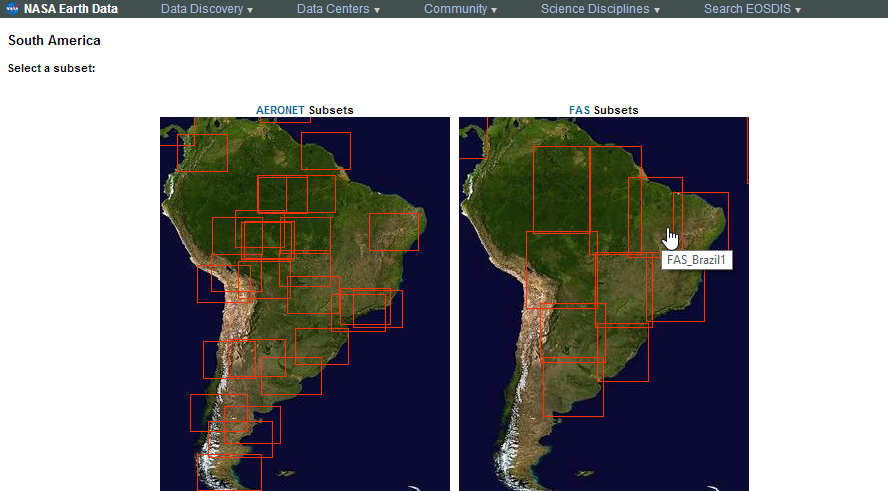
In the details page, click the 2km link under the product of your choice. Here we will download the NDVI product. Learn more about NDVI.
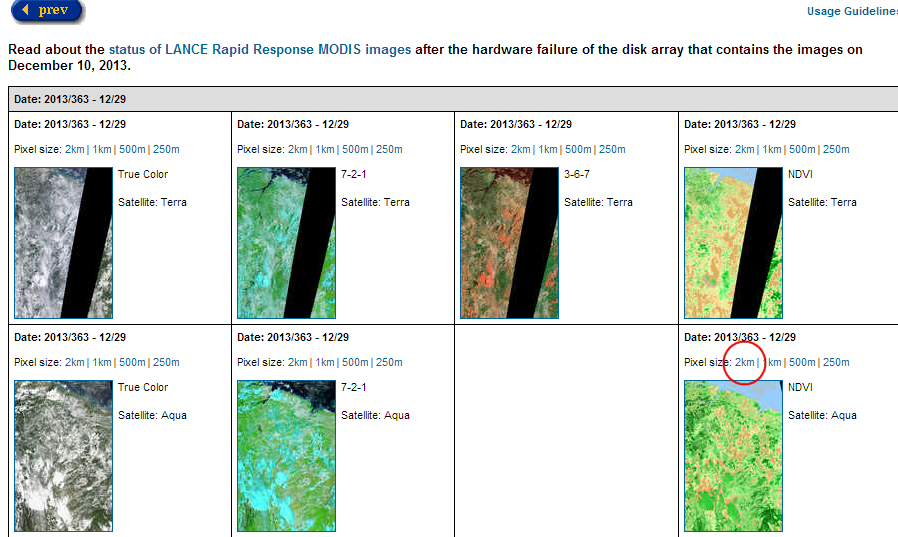
Click the Download GeoTIFF file link to download the raster image.
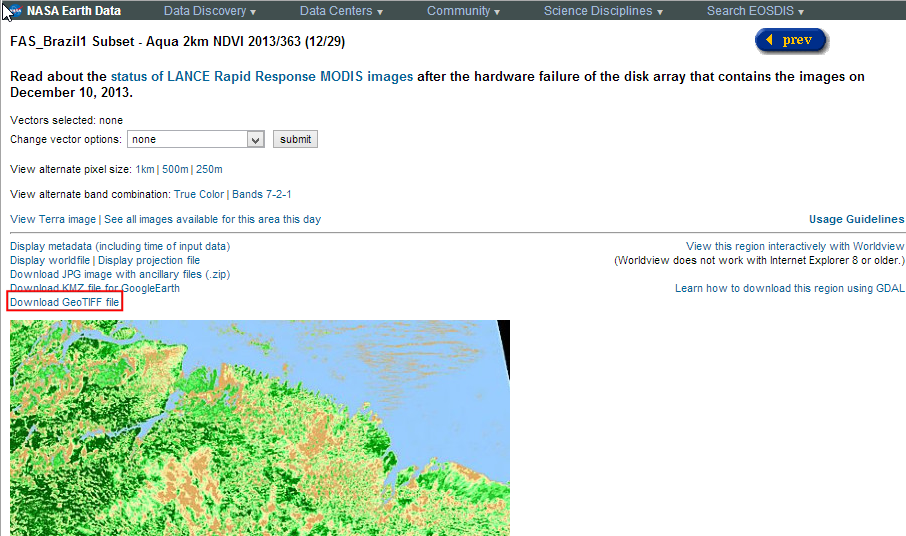
Repeat the process for all 7 FAS subsets for Brazil.
For convenience, you can directly download sample data used in this tutorial from links below.
FAS_Brazil1.2013363.aqua.ndvi.2km.tif
FAS_Brazil2.2013363.terra.ndvi.2km.tif
FAS_Brazil3.2013363.aqua.ndvi.2km.tif
FAS_Brazil4.2013363.aqua.ndvi.2km.tif
FAS_Brazil5.2013363.aqua.ndvi.2km.tif
FAS_Brazil6.2013363.terra.ndvi.2km.tif
FAS_Brazil7.2013363.aqua.ndvi.2km.tif
Источники данных: [LANCE] [NATURALEARTH]
Методика¶
Open QGIS and go to .
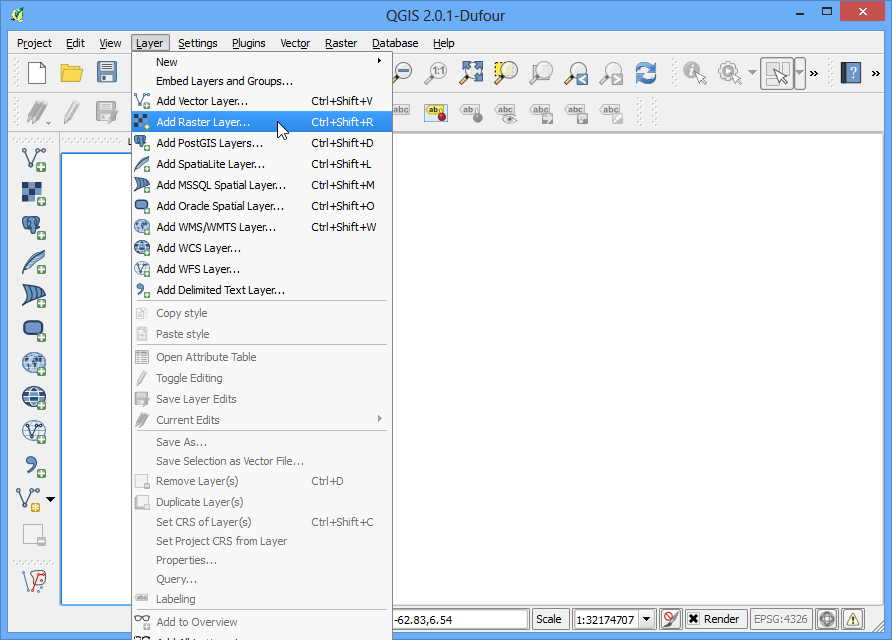
Browse to the directory with the individual images. Hold down the Ctrl key and click on the image files to make a multiple selection. Click Open.
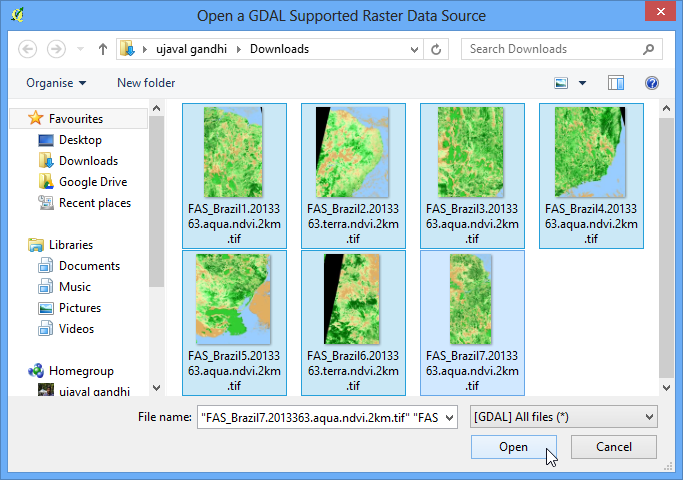
You will see the images load up in the Table of Content on the left panel. Now let us create a single Mosaic image from all these individual images. Click on .
Примечание
The Raster menu in QGIS comes from a core plugin called GdalTools. If you do not see the Raster menu, enable the GdalTools plugin from . See Использование модулей расширения for more details.
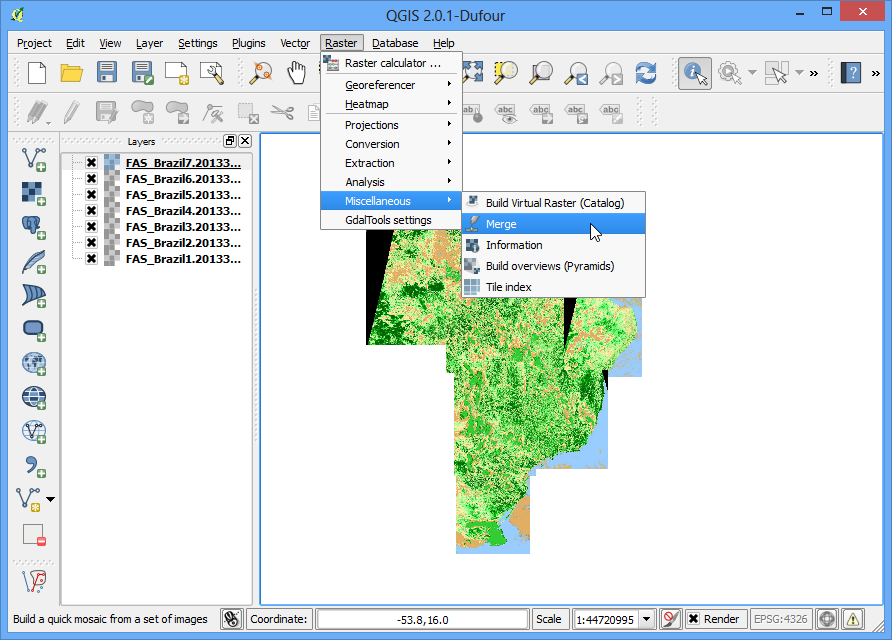
In the Merge dialog, click Select… next to Input files and browse to the directory containing all the individual geotiffs. Keep holding Ctrl key and select all the. subsets. Now click Select… next to Output file and name the output as
Brazil_mosaic.tif. At the bottom, check the box next to Load into canvas when finished. Click OK.
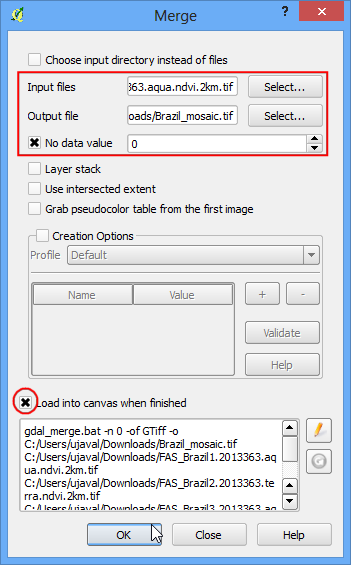
You will get a pop-up message saying Processing complete, once the mosaic is created and loaded to the QGIS Canvas. You will see that the individual images and now combined and mosaiced into a single layer. You can now turn off individual layers by un-checking the box next to them.
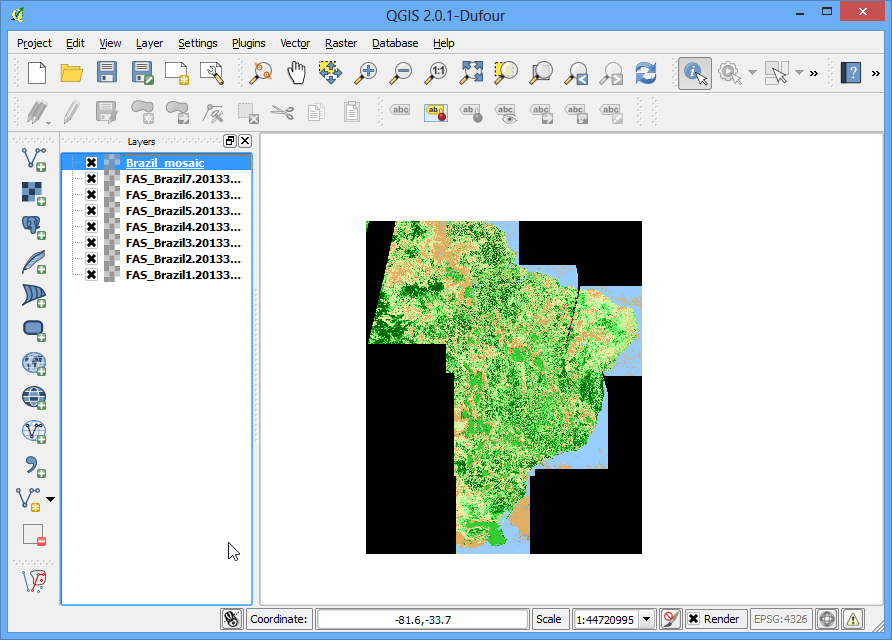
Another Raster operation you can do is to subset or crop an image. We can use a polygon from a vector layer to crop the raster to the exact shape. Let’s load the country polygons shapefile we downloaded from Natural Earth. Go to .
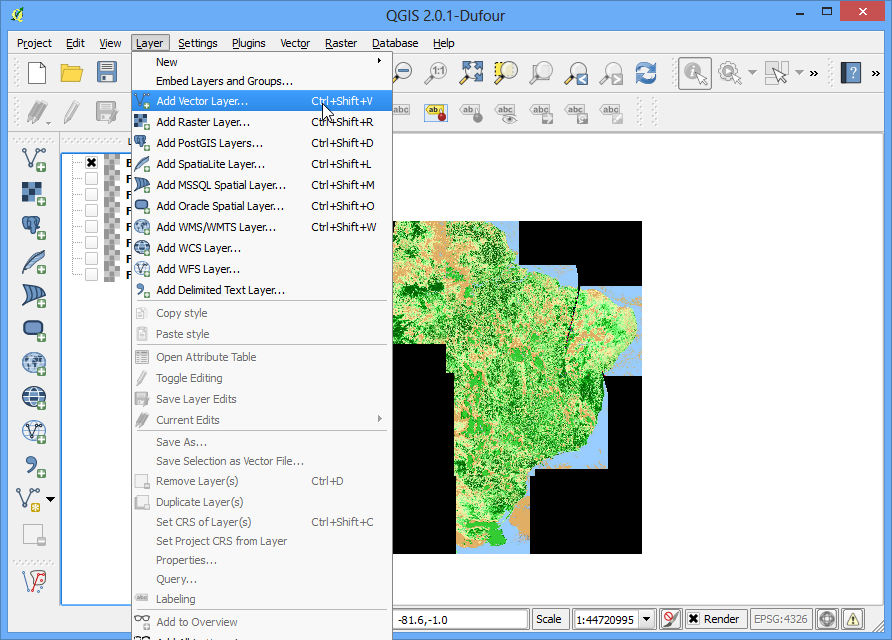
Select the
ne_10m_admin_0_countries.zipfile and click Open. When prompted to select the layer within the zip file, selectne_10m_admin_0_countries.shp.
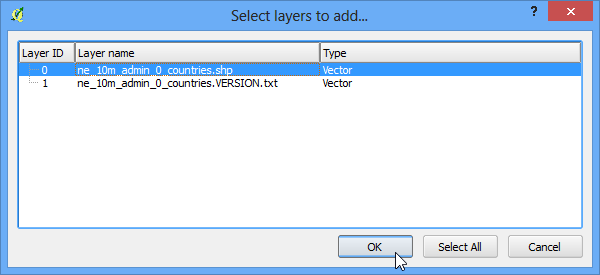
Once the vector layer is loaded, we want to select and extract the polygon for Brazil. Select the Select Single Feature tool from the toolbar.
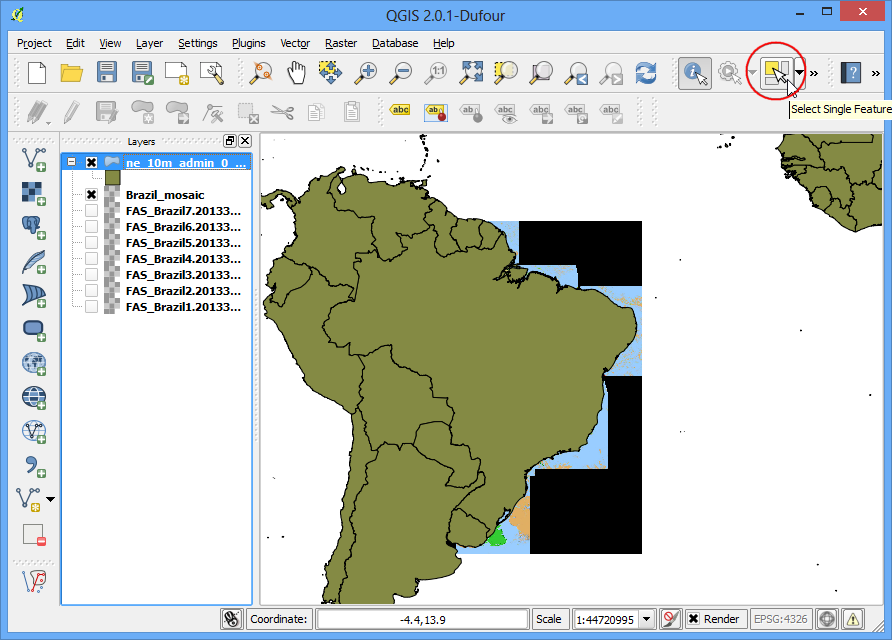
Click anywhere on the Brazil polygon and it will be selected.
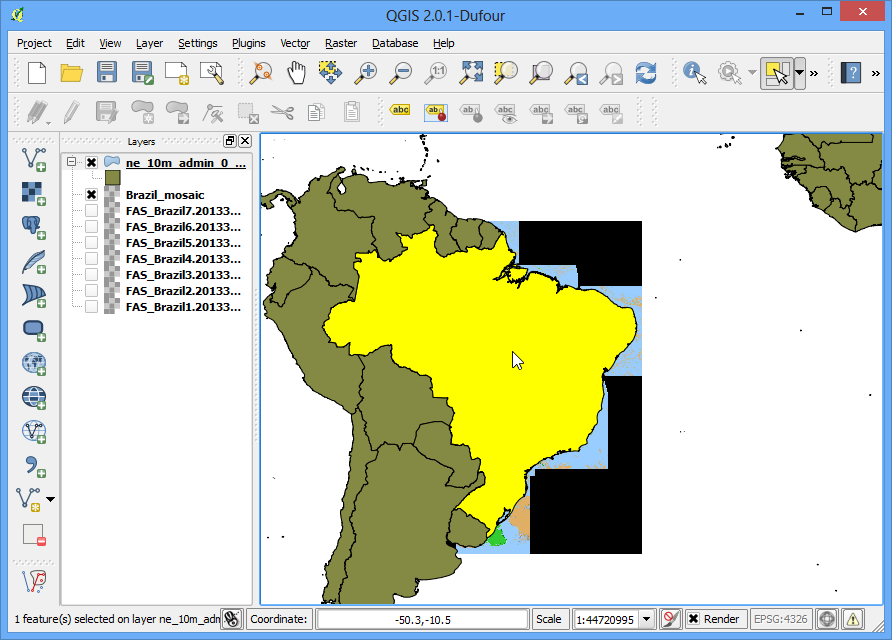
Right-click the
ne_10m_admin_0_countrieslayer and select Save Selection As….
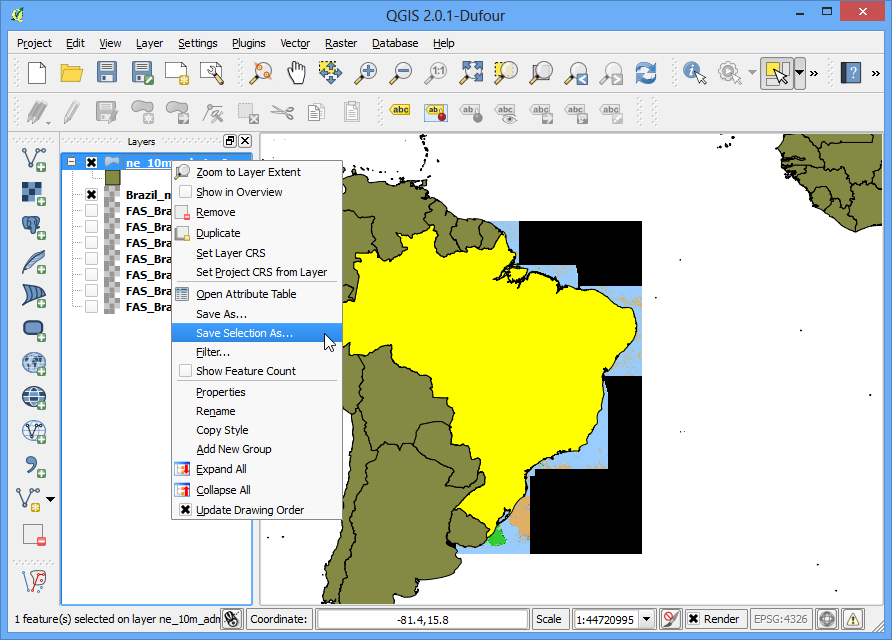
Name your output as
brazil_boundary.shpand make sure Add saved file to map box is checked. click OK.
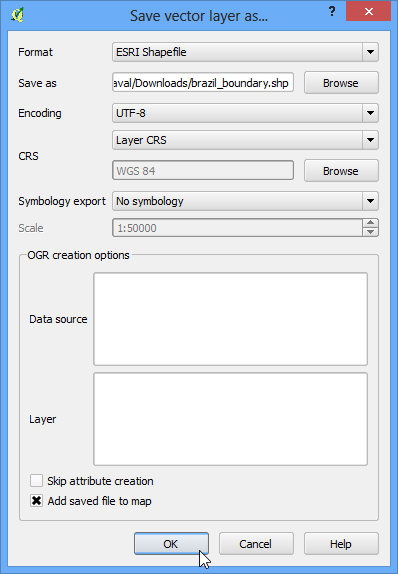
You will see the Brazil boundary polygon now loaded in QGIS.
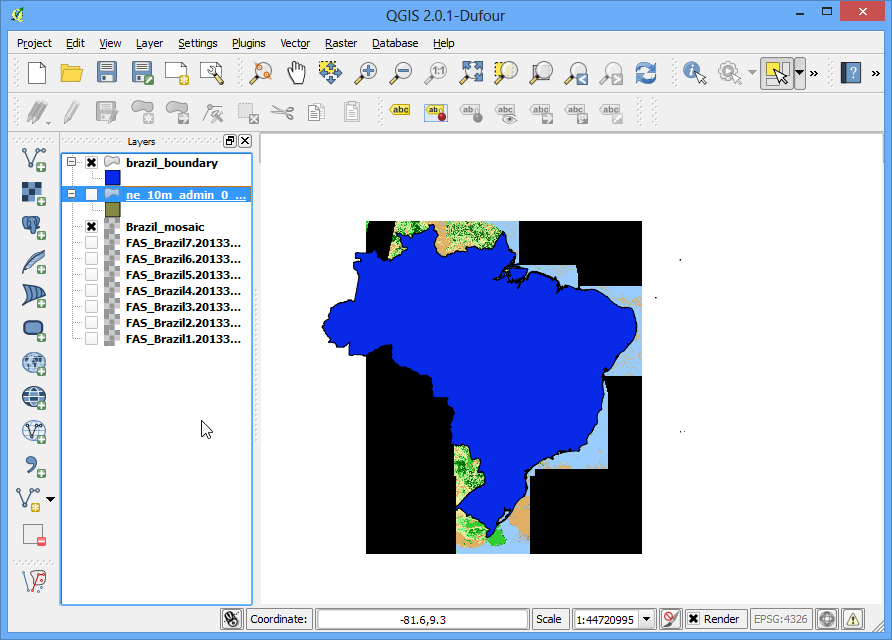
Now go to .
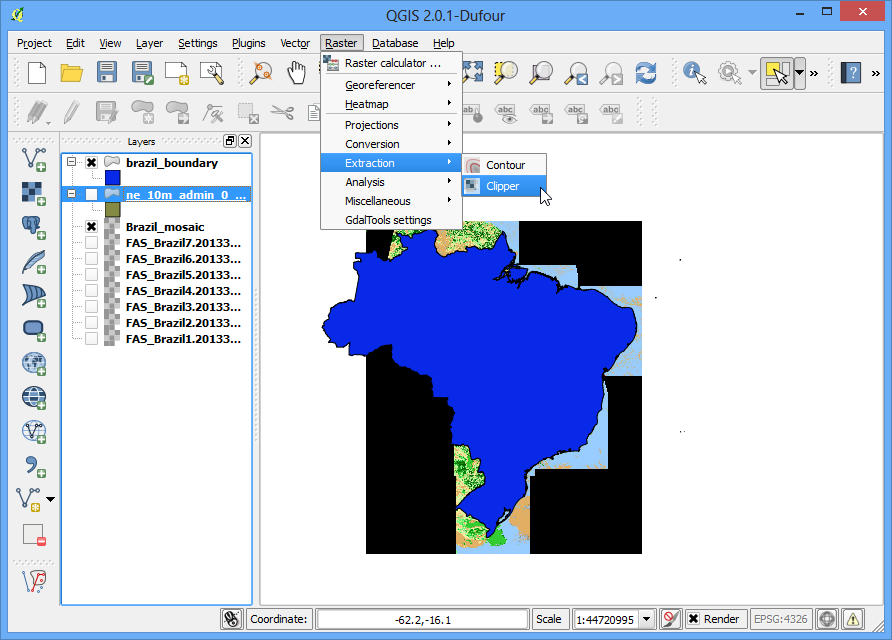
Select the input file (raster) as
Brazil_mosaic. Name the Output file asBrazil_mosaic_clipped. In the Clipping mode section, choose Mask layer. Select the newly createdbrazil_boundaryas the mask layer. Check the box next to Load into canvas when finished. Click OK.
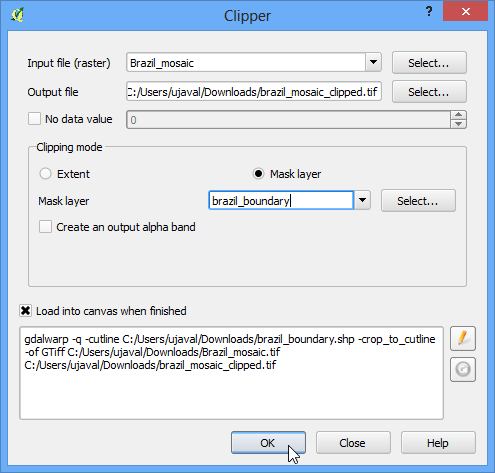
The new cropped layer will be loaded into QGIS. You will notice the black pixels surrounding the actual mosaic. Let’s remove that. Right-click on the
Brazil_mosaic_clippedlayer and select Properties.
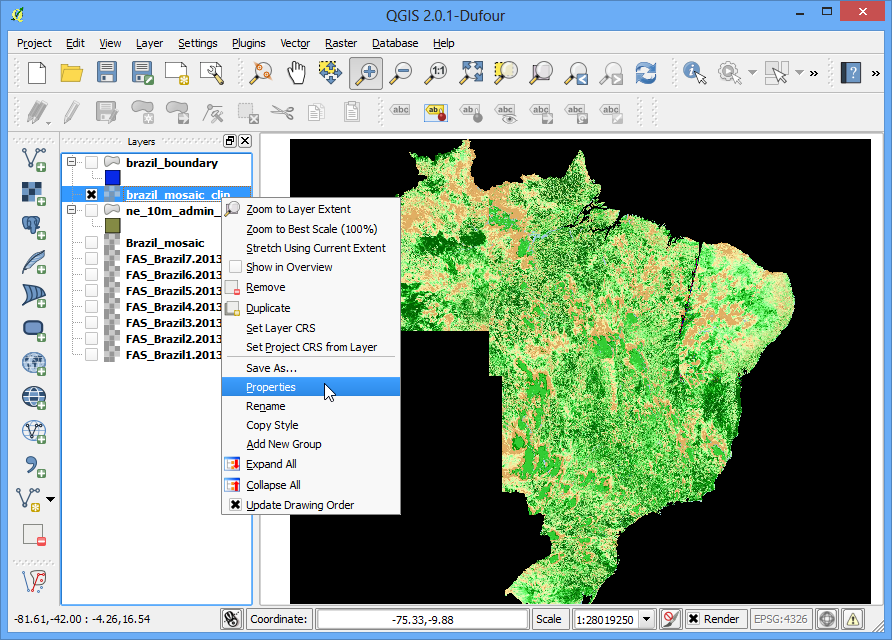
Go to the Transparency tab, and add 0 as an Additional no data value.
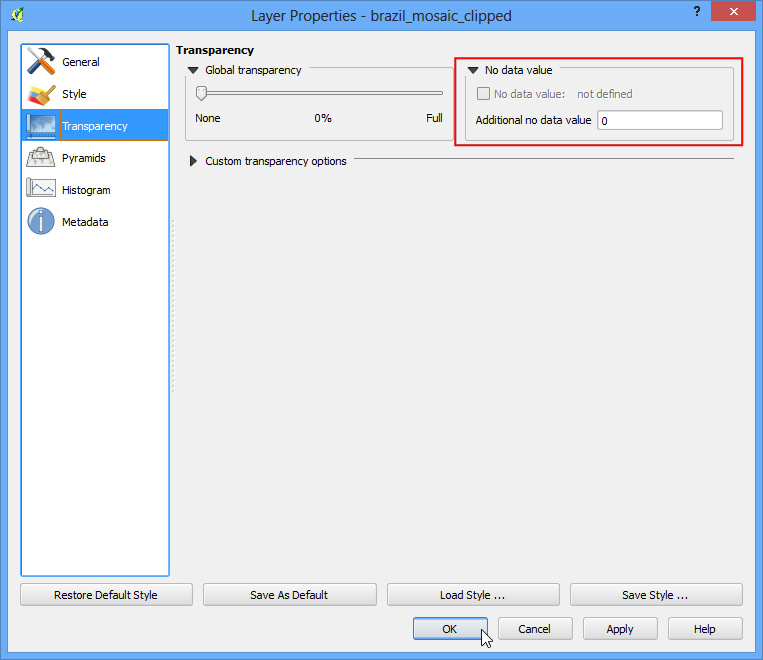
Now you have a nice mosaic cropped to a country boundary that you can use in your project as a background layer or do further analysis on.

If you want to report any issues with this tutorial, please comment below. (requires GitHub account)